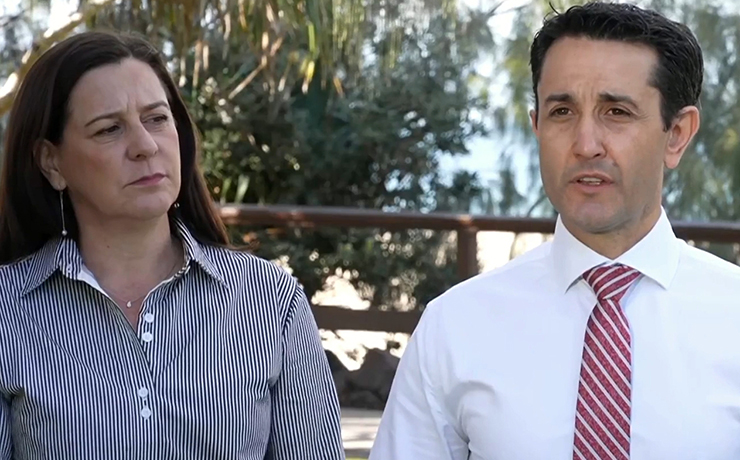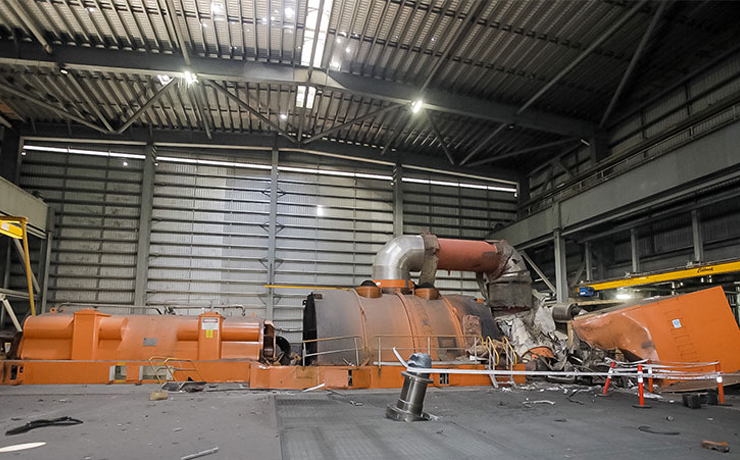
June 26, 2024
The draft report into the 2021 explosion at the Callide C power station has identified “a focus on financial considerations” as one of the key factors leading up to the incident.
It also fingered a failure to manage change by the government-owned operator, CS Energy, as well as a failure to implement effective “process safety” practices.
On May 25, 2021, the C4 generating unit suffered a catastrophic failure, which led to blackouts across south-east Queensland.
The report described the scene: “A piece of shaft weighing more than two tonnes was thrown five metres across the floor. A piece of equipment weighing 300kg … was ejected 20 metres into the air, punching through the turbine hall roof. The force from the impact also ejected remnants of coupling covers, bearings, and shaft sections from the turbine generator, resulting in widespread damage to the surrounding environment, including the turbine hall’s wall and roof.”
Fortunately, no one was killed.
CS Energy released the draft of the so-called Brady Report into the explosion this week after a Federal Court ruling earlier this month.
The court ruled the draft – which had been sought by parties during an ongoing legal dispute involving CS Energy’s 50/50 joint venture partner in Callide C – was not covered by legal professional privilege.
It details four technical problems which led to the explosion, as well as organisational factors which it says contributed to the catastrophic failure.
It notes that CS Energy had been operating at a loss between 2008-2015. After returning to profitability in 2015, “there was a period of significant organisational reform. Multiple initiatives to improve performance were delivered across the organisation, six of which had direct impact on operations at the Callide site”.
However, a Critical Risk Program which was implemented “lost key resources and funding”.
It was also a period of great organisational change.
The draft report noted that between 2017 and the time of the incident, Callide power station had gone through four general managers, three maintenance managers and five production managers.
“In the years leading up to the incident, there had been reviews of how CS Energy managed change, how it conducted maintenance work, how it responded and learned from incidents, and the effectiveness of its Permit to Work systems. These are all key systems for the effective management of process safety,” the report summary stated.
“Substantive issues were identified with each of these systems. CS Energy’s agreed actions in response to these issues tended to be cosmetic, and rarely addressed underlying causes. The assurance system only monitored completion of those agreed actions, and did not consider whether those actions had improved the effectiveness of the systems.”
The LNP State Opposition has repeatedly called for the release of the Brady Report and labelled the delay as part of a State Government cover-up.
On Tuesday, Opposition Leader David Crisafulli said the Callide explosion was “avoidable and completely and utterly disgraceful”.
“(The report) shows the government prioritised using those generators to prop up a shaky bottom line rather than reinvest to make sure that power plant was at its capacity in being able to serve the Queenslanders who own that asset,” Mr Crisafulli said.
Member for Nanango Deb Frecklington, the Opposition’s Shadow Minister for Energy, said the explosion had resulted in “one of the biggest Ministerial cover-ups Queensland has ever seen”.
“Labor has been caught lying to keep Queenslanders in the dark about the Callide catastrophe,” she said.
“We now know why Labor fought so hard to keep the independent expert Brady Report secret.”
Mr Crisafulli and Mrs Frecklington both blamed Queensland’s rising power prices directly on the explosion.
- Download Executive Summary of the Draft Brady Report (317kb PDF)
* * *

Engineer Dr Sean Brady, of consultants Brady Heywood, was engaged by CS Energy to review the cause of the explosion.
His final report is yet to be completed and released.
Following the release of the draft, the State Government said it would appoint special advisers to the Board of CS Energy to ensure it could continue to address the matters arising from the incident.
It would also conduct a review into its publicly owned generation businesses to ensure they were “aligned to deliver on the Queensland Energy and Jobs Plan, optimise energy transition and ensure downward pressure on consumer prices, while maintaining operating and business performance”.
This review will be led by the Queensland Treasury and Queensland Treasury Corporation and is expected to report before the 2025 State Budget.
The State Government will also seek to take 100 per cent public ownership of the Callide C Power station.
A spokesperson said the State Government had taken “strong action” since the explosion, including:
- Appointing a new chair of CS Energy in June 2023
- Appointing a new Board
- Appointing a new CEO in July 2023
- Appointing of a new Executive General Manager, Asset Management
- Increases to maintenance funding since 2016
- Funded 100 per cent of the design and rebuild of the C4 generator and the cooling towers
* * *
Why Unit C4 Exploded
An animation released by CS Energy in February 2024:
* * *
Related articles
- MP Calls For Release Of Callide Report
- Third Unit Back Online At Callide
- First Photo Of Power Station Damage
- Power Network ‘Stable’
- Fire Blamed For Blackout
[UPDATED]























